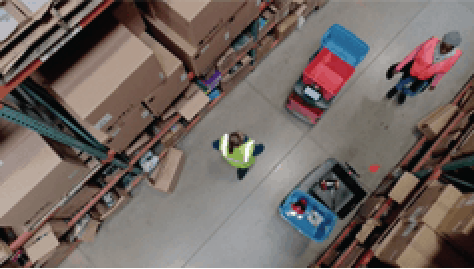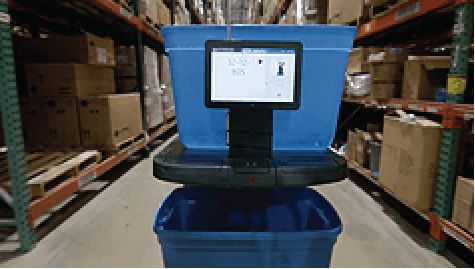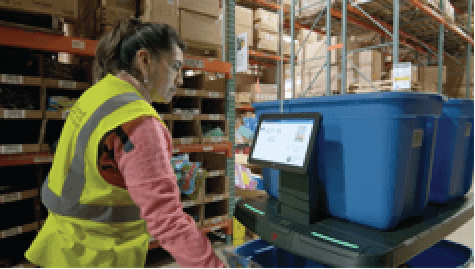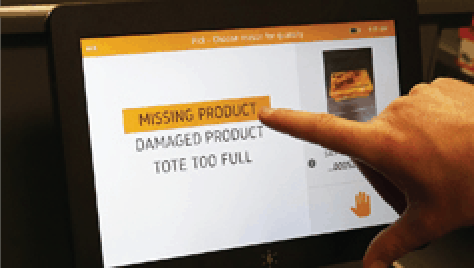5 month return on investment
Inflexibility and cost of traditional automation pushes 3PL to collaborative robots
ACT Fulfillment is a California-based third-party logistics provider. Founded in 1994 in 15,000 square feet, ACT Fulfillment has grown to 1.4 million square feet. ACT Fulfillment employs 600 people and services wholesale, retail and ecommerce fulfillment for major fashion brands. ACT also provides value added services for its customers. ACT’s Ryan Cox led the project to implement 6 River Systems collaborative robots in a 40,000 square foot picking area dedicated to shoe fulfillment for retail replenishment.
The triggers that lead to cobots
In ACT’s case, multiple factors piqued the company’s interest in collaborative robots:
Capacity limits. In 2017, ACT wasn’t able to fulfill enough volume for its retail replenishment and ecommerce operations, and began looking for solutions to speed up production.
Process snags. ACT’s workflow prior to implementing cobots was labor intensive, with bulk pick and resorting and resegregating into order level distribution at packout. This process was very labor intensive, averaging 25 units per hour pick to ship, according to Cox.
High turnover in tight labor market. ACT faced what many warehouses face today—they struggled to keep staff. They turned temps 5 to 7 times a year, and it took weeks to train people to do bulk pool and to do the sort and segregation.
Why ACT chose collaborative robots

Ryan learned about 6 River Systems through a warehouse consultant. He originally considered a few traditional automation options, including a post-pick sortation system. But that automation would take more than a year to implement and the price tag started at $5 million. In the end, collaborative robots were the most competitive alternative to traditional automation. The ACT team estimated a 6 River Systems solution could be achieved at a fraction of the cost of the sortation system.
ACT chose 6 River Systems, because it is the fastest, most flexible solution on the market, and a fraction of the cost of traditional automation and goods-to-person systems.
Quicker implementation
With traditional automation, ACT was looking at a 6-12 month lead time for project completion. With 6 River Systems, it was two months. “These barriers, lead time and cost stopped us previously in progressing with automation,” Cox remarked.
A more flexible way to automate
ACT looked into other robotics and traditional solutions providers, but they required a lot of hardware and equipment upgrades to ACT’s current facility. “That didn’t work for us. We wanted to streamline the process with 6RS and remove as many steps as possible,” Cox said.

Solution & Results
In just three months, the 3PL saw some huge gains by choosing 6RS:
MORE THAN 3X THROUGHPUT
ACT tripled pick rates and decreased walking with pick path optimization. Overall ACT sped up processing by greater than 3X, from 25 UPH to 85 UPH in-aisle picking and 72 UPH in the whole process. To reduce in-aisle walking ACT used 6 River Systems’ cartonization capabilities to induct many units and cartonize based on pick paths. The ACT team reduced in-aisle walking by 50% with 6 River Systems’ pick path optimization.
Units Per Hour (UPH)
25 UPH
Target UPH
75 UPH
Actual UPH
85 UPH
Improvement
220%
SIMPLIFIED THE ENTIRE PICKING PROCESS
With 6RS, ACT moved to cart pick instead of bulk pool, sort and segregate. In bulk pool, there is a double pick. With cartonization in-system, the solution allowed ACT to remove the double-pick. “We wanted to streamline process with 6RS and remove as many steps as possible”.

Reduced mispicks by 90%
ACT went from a manual pick process to one that involves hands-free scanning on the robot. Doing this dramtically increased order accuracy.
Tailored solution to fit unique needs
ACT was able to work with 6RS to install a third shelf onto the robot and added magnets to reduce the amount of time it took to apply shelf labels. Each shelf is an order in ACT’s operation, and they have a carton label on each shelf. They used magnets to hold labels on CHK shelf.
Why do associates like the system?
By implementing collaborative robots, ACT saw worker productivity — and employee morale — increase.
"The biggest fear we had around automation was maintaining morale, and we positioned the Chucks as a tool that cohabitate with pickers"

Optimizes the picking route to reduce walking.

Carries the totes, keeping associates hands-free.

Confirms picks and indicates which container to put items into.

Provides context specific reason codes which makes exception handling a breeze
Learn more about how 6 River Systems can triple your warehouse throughput by scheduling a free 30-minute consultation.